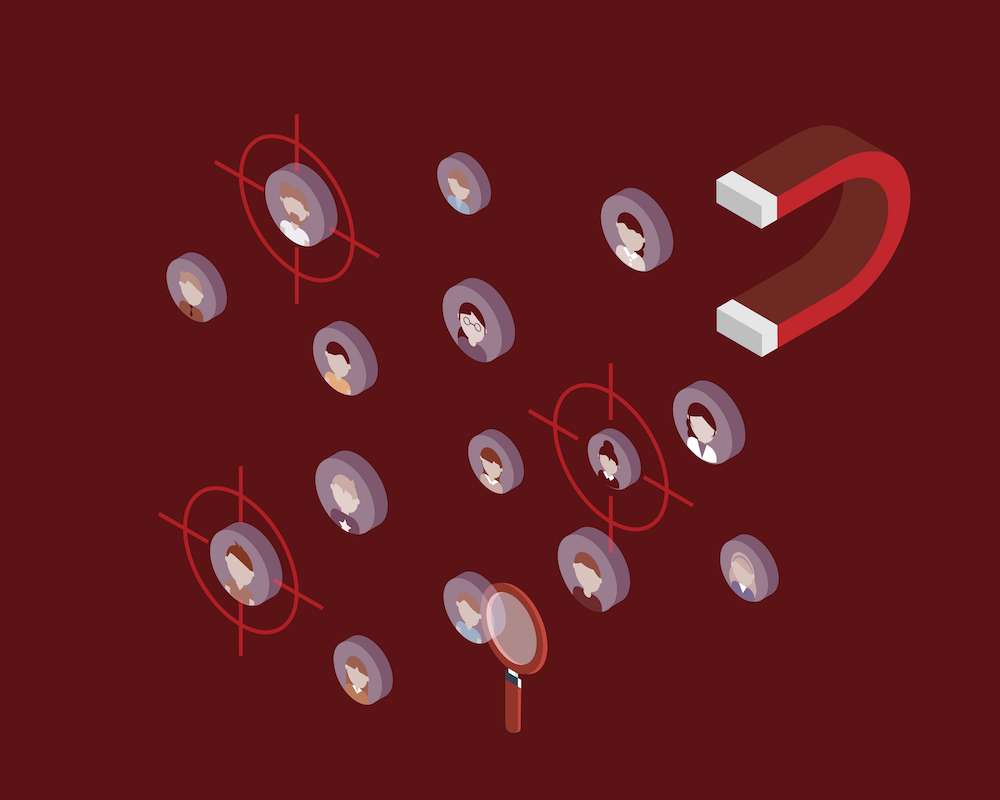Lookalike domains are fraudulent domains that mimic legitimate ones in order to trick users into divulging sensitive information or downloading malware. These domains can be used for phishing attacks, domain name spoofing, and other malicious activities.
In this blog, we will discuss what lookalike domains are, provide examples of fake domains, and explain how to detect and monitor lookalike domains.
What are Lookalike Domains?
Lookalike domains are malicious domains that are designed to look like legitimate domains, and often use similar domain names, logos, and other branding elements to deceive the target audience.
This type of cyberattack is particularly difficult for businesses to catch and defend against because of how many potential variations can exist for any given organization, and how easy it is for any person or group to purchase a domain. For example, a hacker wanting to target paypal.com could purchase paypaL.com, and deceive users by utilizing paypal’s logos and branded content. From a quick glance, users might not notice the error in the URL, or first time users might not suspect anything is wrong.
Next, let’s look at the different types of domains that exist in order to better understand what legitimate domains look like.
What are five types of domains?
- Top-Level Domains (TLDs): TLDs are the highest level in the domain naming system and are located to the right of the dot in a domain name. Some examples of TLDs include .com, .org, .net, .edu, and .gov.
- Country Code Top-Level Domains (ccTLDs): ccTLDs are two-letter TLDs that identify a particular nation or region for the United States, .ca for Canada and .uk for the United Kingdom, respectively.
- Second-Level Domains (SLDs): SLDs are located to the left of the TLD in a domain name and are usually the primary identifier of a website. For example, in the domain name “example.com,” “example” is the SLD.
- Subdomains: Subdomains are prefixes to the SLD in a domain name and are separated by a dot. For example, in the domain name “blog.example.com,” “blog” is the subdomain, and “example” is the SLD.
- Internationalized Domain Names (IDNs): IDNs are domain names that use non-ASCII characters, such as characters with diacritical marks or non-Latin scripts. They allow websites to use domain names in local languages and scripts, making it easier for people to access websites in their native language. For example, the domain name “www.банк-россии.рф” uses the Cyrillic script and means “Bank of Russia” in Russian.
The Impact of Lookalike Domain Scamming
Hackers utilizing lookalike domains can deceive internet users for a variety of different motives, some financial, some informational, some both:
Scamming: Someone could use a lookalike domain to set up a website that looks like a legitimate business or organization with the ultimate goal of scamming customers or business employees. For example, they could create a fake bank website, ask people to enter their account details, and then use that information to hack into legitimate accounts.
Phishing: Similar to scamming, hackers use a fake domain name to create a fake login page for a legitimate website, and then trick people into entering their login details. The attacker could then use those details to access personal accounts like emails, bank accounts, work accounts and more.
Malware distribution: Someone could use a fake domain name to set up a website that looks like a legitimate download page for a popular software program or app, but contains malware. When people download and install the program, they inadvertently install the malware.
Reputation damage: If someone sets up a fake domain name similar to a legitimate business or organization, it could damage the reputation of the actual entity. For example, if someone sets up a fake domain name for a well-known brand and uses it to spread false information or engage in illegal activities, it could harm the brand’s reputation.
If you come across a website you suspect may be using a fake domain name, it’s essential to be cautious and not provide sensitive information. You can also report the website to the appropriate authorities, such as the Federal Trade Commission (FTC) or Internet Crime Complaint Center (IC3).
Some examples of fake domains in the real world
These domains are designed to look legitimate, but they contain small differences that can easily fool users.
- Goggle.com instead of Google.com
- Bannkofamerica.com instead of Bankofamerica.com
- Amazoon.com instead of Amazon.com
- Fcebook.com instead of Facebook.com
- Miccrosoft.com instead of Microsoft.com
How to Detect Lookalike Domains
Detecting lookalike domains can be challenging, as they are designed to closely resemble legitimate domains. However, there are several steps you can take to find lookalike domains and avoid them:
- Check the spelling: Lookalike domains often contain misspellings or slight variations of the legitimate domain. For example, instead of Google.com, the fake domain may be Gooogle.com. Always double-check the spelling of the domain before entering any sensitive information.
- Look for HTTPS: Legitimate websites use HTTPS to encrypt data and provide a secure connection. Lookalike domains may not have a valid SSL certificate, so they will not use HTTPS. Always check for the padlock symbol in the address bar to ensure you are on a secure website.
- Check the URL: Lookalike domains may use subdomains or different extensions, such as .net or .org, instead of the legitimate .com extension. Always check the URL to ensure it matches the legitimate domain.
- Use a website checker: Several website checkers available online can help you identify fraudulent domains. These tools can analyze the website’s reputation, security, and content to determine its legitimacy.
- Monitor for lookalike domains: Regular monitoring can help you identify and mitigate potential threats. This can be done manually or with the help of specialized software designed for this purpose.
Lookalike Domain Monitoring
Lookalike domain monitoring is a proactive approach to identifying and mitigating threats from lookalike domains. This involves regularly checking for domains that closely resemble legitimate domains and taking appropriate action to prevent malicious activity.
- Use specialized software: There are several tools available that can help you monitor lookalike domains. These tools can automatically detect and flag domains that resemble your legitimate domains.
- Regularly review domain registrations: Reviewing domain registrations can help you identify any new domains that have been registered that closely resemble your legitimate domains.
- Identify high-risk domains: Identify domains that are at high-risk for lookalike domain spoofing. This includes domains similar to your legitimate domain name, domains that use common misspellings or phonetic variations, and domains identical to your company’s products or services.
- Set up alerts: Set up alerts for new domain registrations that resemble your legitimate domain name. This can be done using specialized software or manually monitoring domain registration databases.
- Monitor social media: Monitor social media platforms for fake profiles or pages that use similar names or logos to your legitimate business. Cybercriminals often use social media to launch phishing attacks or distribute malware.
- Conduct regular scans: Conduct regular scans of your website and network to detect signs of a lookalike domain attack. This can include monitoring for fake login pages or phishing emails that use similar domain names.
- Use threat intelligence: Use threat intelligence services to stay up to date on emerging threats and trends in lookalike domain spoofing. This information can help you proactively protect your business from potential attacks.
By implementing these tips for effective lookalike domain monitoring, you can reduce the risk of your business falling victim to cybercriminals using lookalike domains for malicious purposes.
Five Steps to Take to Prevent Falling Victim to Lookalike Domains
Protecting your business from lookalike domains is critical to ensure that your customers and employees do not fall victim to phishing attacks or malware distribution.
- Register similar domains: Registering similar domains can help prevent cybercriminals from using them for malicious purposes. This can include misspellings or variations of your legitimate domain name. This approach can also prevent other businesses or individuals from using similar domains to harm your brand reputation.
- Educate employees: It is crucial to educate your employees about the risks of lookalike domains and how to identify them. Employees should be trained to verify a website’s authenticity before entering any sensitive information.
- Use email authentication protocols: Email authentication protocols, such as SPF, DKIM, and DMARC, can help prevent phishing attacks that use lookalike domains. These protocols can verify the authenticity of the email sender and prevent malicious emails from reaching your employees.
- Use web filtering and security software: Web filtering and security software can help detect and block access to known malicious domains. These tools can also prevent employees from inadvertently accessing dangerous and look-alike websites.
- Monitor your domain name: Regularly monitoring your domain name can help you identify any new registrations that closely resemble your legitimate domain. This can be done manually or with the help of specialized software designed for this purpose.
Technology to Protect Your Business from Lookalike Domains
When it comes to technology to purchase to protect your business from lookalike domains, there are several options available. Bolster’s domain monitoring and takedown technology conducts daily network scans to detect uses of your brand across the internet, as well as closely monitors domains similar to your registered domains to watch for lookalike domain instances. When lookalike domains are detected and determined to be active and malicious, Bolster can automatically takedown the site before it impacts your audience.
Protecting your business from lookalike domains is critical to ensure your customers and employees are safe from cybercriminals. Taking proactive measures and investing in the right technology can minimize the risk of falling victim to phishing attacks and other malicious activities.
To learn more about Bolster’s lookalike domain detection and takedown technology, request a free demo of the platform today.










